另类自我写照
——谈陈承卫油画的当代性
Self-Portraiture of a Different Nature
--On the Modernity of Chen Chengwei’s Oil Painting
文/金影村
By Jin Yingcun
陈承卫近期的《大民国》系列作品给人以耳目一新的感觉:手法分明还是那精致的古典写实,视觉上却呈现出某种荒诞、超现实、陌生化的审美特质。他将一幕幕想象中的民国历史片段搬上画布,营造出布莱希特式的舞台效果,同时融入了若干观念摄影的元素。尤为引人注目的是,画家本人也参与到了这出年代大戏中。画面中的他手持电筒,时而化身巡捕房的警察,时而装扮成翩翩君子,时而又带着几分花花公子的意味。背景似乎总是茫茫的夜色,唯有电筒照射出的光线掌控了局面,如舞台上的聚光灯,时刻将观者的视线引向唯美神秘之处,制造出强烈的心理张力。《大民国》系列的画面端庄肃穆,但因画家活跃的自我介入,又显得充满趣味性与戏谑性。通过挑逗观众的视觉神经,画家想要与我们展开的却是一场思维的游戏。陈承卫用自我扮演介入到作品创作中,已经与传统意义上的自画像大相径庭。而细细体味其中的意象,却处处能寻见画家个人的影子。这就引出了一个有趣的话题:艺术家的自我,有多少直接呈现的可能?
The recent Republic of China series of Chen Chengwei presents a refreshing
feeling to the eyes: some absurd, surreal, and unfamiliar aesthetic qualities
are presented visually with still the exquisite method of classical realism.
The scenes of historical fragments during the Republic Period are moved onto
the canvas to integrate with some elements of conceptual photography for
creating the stage effect in the style of Bertolt Brecht. It is very striking
that the artist also participated in the great show of that period himself.
Holding a flashlight, the painter sometimes turns into the policeman from the
police station, sometimes dresses up as a noble gentleman, and sometimes shows
kind of the style of a playboy. With the darkness of night as the background,
the situation is controlled merely by the beam of the flashlight. Like the
spotlight on the stage, the beam guides the eyes of the audiences to the beauty
of mystery and creates a strong psychological tension. The scenes of the Republic of China series are generally
dignified and solemn, yet the active participation of the artist adds an air of
humor and jocosity to them. By challenging the visual nerves of the audiences,
the artist is playing a game of the mind with us. The participation of the
artist into the creation of the works is totally different from the
self-portraiture in the traditional sense. Through careful reflection on the
images in the pictures, the trace of the artist could be found everywhere. This
brings out an interesting topic: what is the possibility of the direct
presentation of the artists themselves? 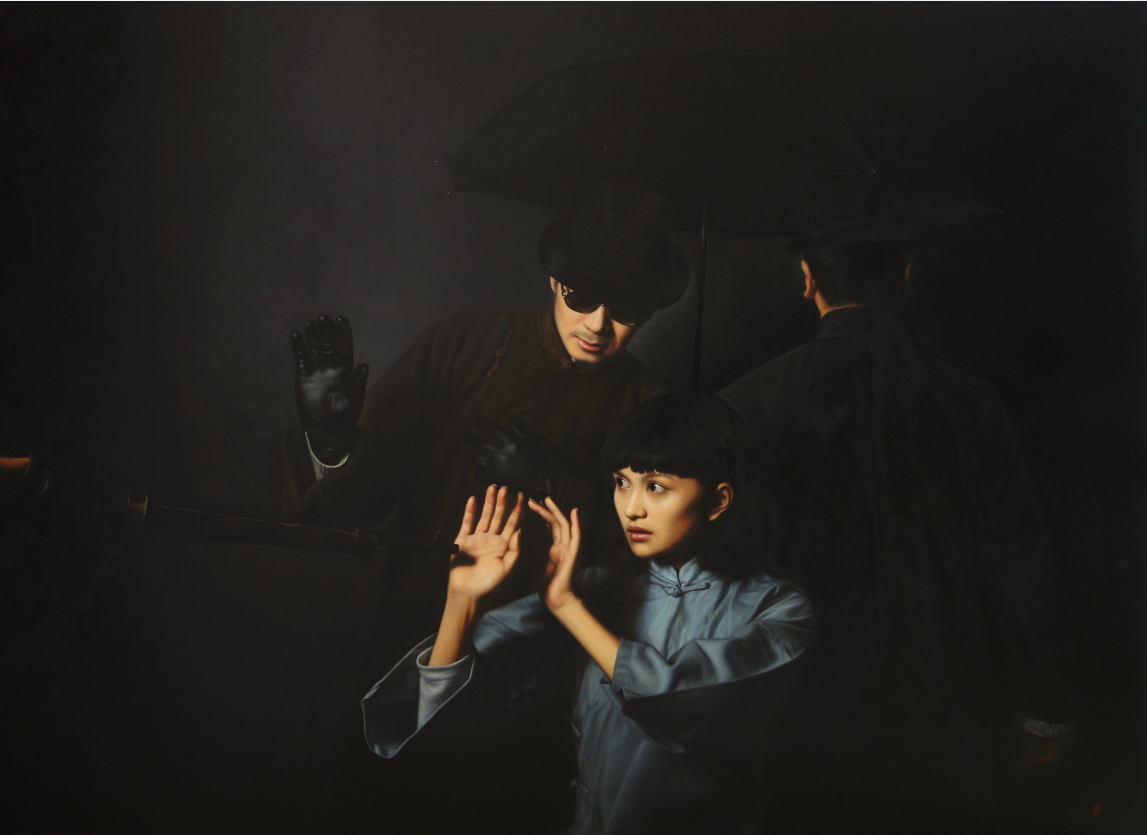
纵观艺术史,不难发现诸多古典大师也已厌倦了中规中矩的自画像,和观众玩起了类似捉迷藏的新花样:追溯到文艺复兴盛期,意大利画坛巨匠拉斐尔便在其史诗巨作《雅典学院》中插入了一个耐人寻味的细节——仔细观察画面右下方处,便会发现画家本人也站在众多古希腊哲人与思想家群体中,目光直视观者,仿佛是在声明,这前无古人后无来者的思想盛宴,我拉斐尔就算穿越过去也不能缺席啊!北方文艺复兴巨擎扬·凡·艾克(Jan van Eyck)更是奇思妙想,在《阿尔诺菲尔婚礼》一画中,为了证明自己作为画家兼证婚人的形象,他将自己画在了房间墙壁上一面硬币尺寸大小的镜子中,并在显眼的位置写上拉丁文“Johannes de eyck fuit hic”,意即扬·凡·代克在场。而巴洛克时期西班牙宫廷画家委拉兹凯支,则在《宫娥》(Las Meninas)一作中将自己正在画国王和王后的形象如实记录下来,在画与被画、看与被看之间实现了微妙的转化……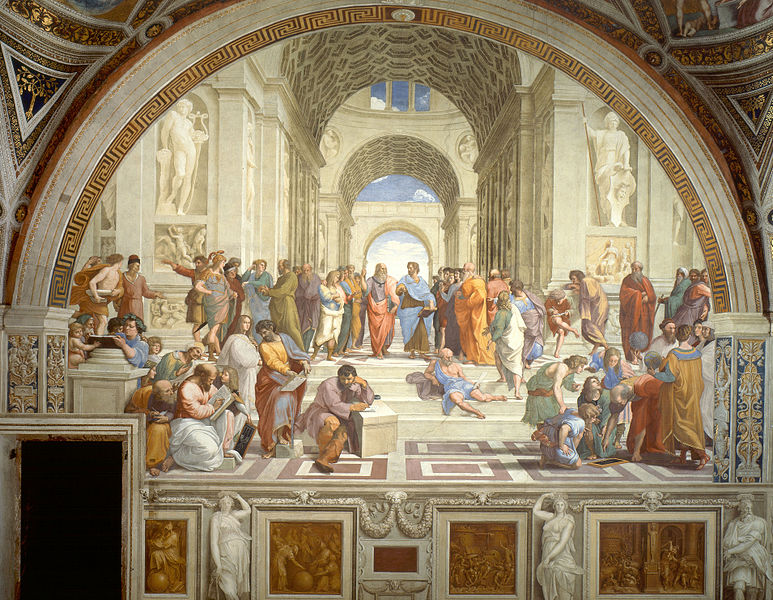
After taking a panoramic view of the history of art, it can be easily found that many classical masters were tired of the ordinary self-portraiture, so they played the new tricks of hide and seek with the audiences.Tracing back to the prime time of the Renaissance, Raphael, the great Italian master of painting, added a thought-provoking detail into his epic masterpiece School of Athens. It can be found that the artist is also standing among the ancient Greek philosophers and thinkers after careful observation of the lower right corner of the work. He is looking directly into the eyes of the audiences as if he is making a statement that I, Raphael, should travel through the history to participate in the unprecedented gathering of the great minds. Jan van Eyck, the great master of northern Europe during the Renaissance, made a more imaginative move. In order to prove that he is the painter who witnessed the marriage, he put his self-portraiture into a mirror of the size of a coin on the wall in the room in the picture and added the note “Johannes de eyck fuit hic” in Latin at a prominent place which means “in the presence of Jan van Eyck”. Diego Velázquez, the Spanish court painter in the Baroque period, recorded the scene that he is painting the King and the Queen in the work Las Meninas, realizing the subtle transformation between painting and being painted and between looking and being looked...
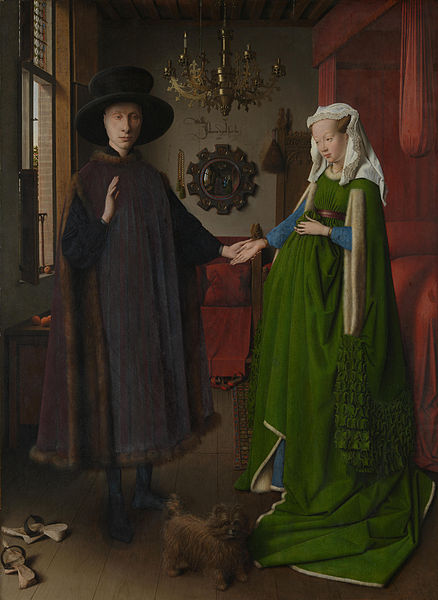
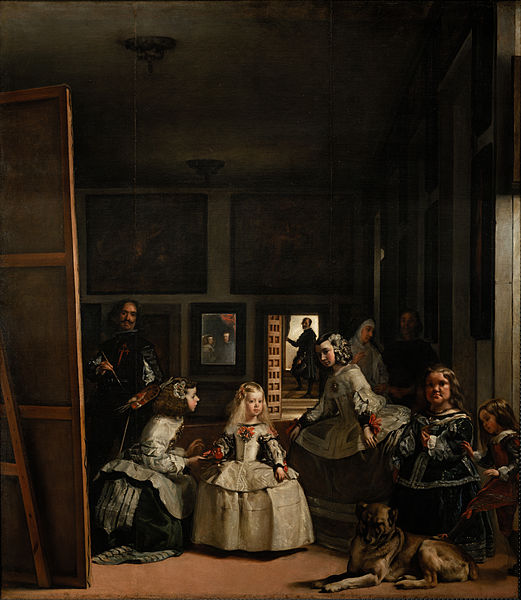
这些别出心裁的自我介入,无外乎两重意图,一为实现画家参与画面叙事的愿望,二为自传式的纪实强调。然而,陈承卫的作品,体现出了前两者之外的第三重意图——通过自我扮演来实现个人叙事。扮演,是画家脱离自身身份的创造,同时又是观念化的自我写照,因而,在这一层面上,《大民国》系列显示出了其内在独有的当代性。
The ingenious participation of the artists in the picture reveals nothing more than two intentions. One is to realize the wish of the artist for participating in the narration of the picture and the other is for the autobiographical documentary emphasis. However, Chen Chengwei shows a third intention in his works, namely, to realize personal narration with self-portraiture of different styles. The different styles demonstrate the creation of the artist for getting out his identity as a painter. Meanwhile, they are the conceptual self-portraiture. Therefore, Republic of China series displays a unique intrinsic modernity in this sense.
这样的尝试蕴含着某种超越时空的前卫性和实验性。举个例子,早在中国清代,画工们便创作了一套享誉盛名的《雍正行乐图》。在其中,雍正作为帝王的形象被最大限度地弱化。相反,他在图中化身为多种承载了满、汉文化符号的角色:山中抚琴的高士、书斋中手不释卷的士大夫、赏荷观梅的文人骚客、仙风道骨的隐者,还有渔夫、喇嘛、猎人、道士……不少人看到这些丰富多彩的形象,便认为此作反映了雍正皇帝广泛的业余爱好。而事实上,作为一名勤于政务的帝王,这套作品并不一定是雍正真实生活的写照,而更似一种个人的文化想象。文武并用,德才兼举,作为满族君王的雍正试图宣告自己在文化上兼容并蓄的姿态,政治性与趣味性并存,或许才是这套作品的用意所在。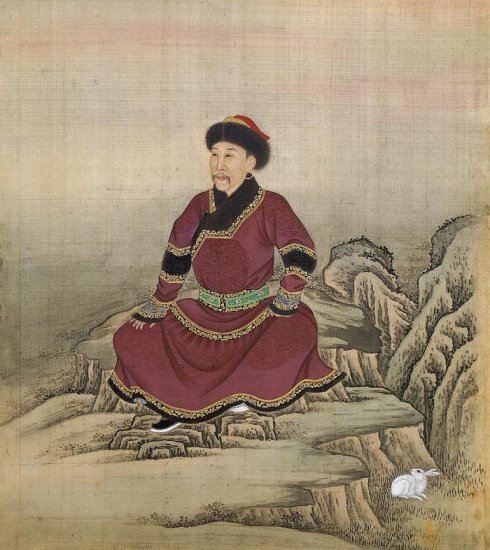

Such attempt implies the characteristics of avantgarde and experimental fashion beyond time and space. For example, painters created a renowned set of painting titled Amusement of Emperor Yongzheng in as early as Qing Dynasty. In the works, the image of Yongzhong as the emperor was greatly weakened. On the contrary, he acted as different characters bearing the symbols of Manchurian and Chinese culture in the pictures, like the hermit playing zither in the mountains, the scholar reading books in his study, the literati appreciating lotus and plum blossom, the recluse with the demeanor of a transcendent being, fisherman, lama, hunter, Taoist... After watching the great diversity of images, many people think that the works reflect a wide range of hobbies of Emperor Yongzheng. In fact, the works is not necessarily the real portrayal of Yongzheng who was busy with the governance of the country. It is more likely that they show personal cultural imagination. As the emperor of the Manchu-led Qing Dynasty, Yongzheng tried to show his inclusive attitude towards different cultures by emphasizing civil and military factors and highlighting morality and talent. Perhaps the real intention of the works is to make the serious political statement more amusing.
而在西方当代艺术中,自我扮演则更是比比皆是。其中,女艺术家辛迪·舍曼(Cindy Sherman)的观念摄影尤能体现自我扮演的魅力。辛迪·舍曼一路自拍,将自己装扮成电影演员、童话人物、历史肖像以及美国社会的典型公共形象,以此嘲弄消费社会的欺骗性与幻觉性。她的作品指向群体而非个体,却仅凭一己之力,超越了普通的摄影作品,直达观念艺术。
Self-portraiture is also very popular in modern western art. Among them, the charm of self-portraiture is reflected especially in the conceptual photography of Cindy Sherman. She has taken a lot of photos of herself dressed up as film actresses, fairy tale characters, historical portraits, and typical public images of the society in the US to mock at the deception and illusion of the consumption society. Aiming at different groups rather than individuals, she has created the works of conceptual art that surpass the ordinary photography all on her own.
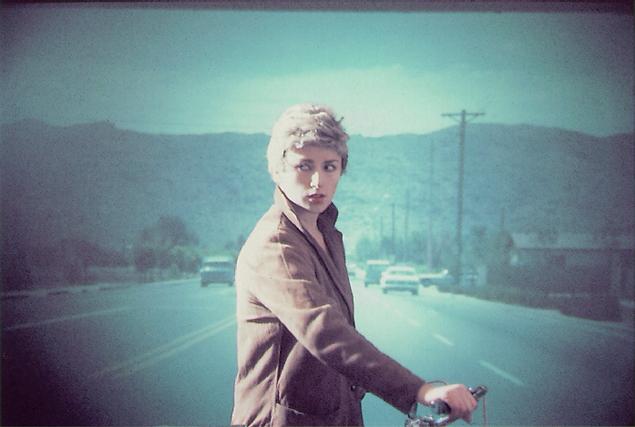
一中一西,一古一今,以上所举的两个例子虽在媒介与意图上毫无关联,但放在当代艺术的观念领域讨论,却实现了辩证统一。雍正为了建构自我、强化自我,扮演成各式各样的典型人物,而所有的角色都附属于皇帝本人的身份;辛迪·舍曼解构自我,将自我变成了纯粹的道具,反过来证明了她的艺术家身份。举这两个例子,是为了树立自我扮演的两条路径与其中的典型。反观陈承卫的作品,仿若这二者之间的调和。画中的“自我”,既身处其中,又置身室外。画家将个人情感带入到作品中,或忧伤挣扎,或缠绵悱恻,或坦然释怀。与此同时,作品始终维持着舞台与观众之间的距离感。这假作真时真亦假的思维转换,释放出奇妙的艺术效果。
One is in ancient China and the other is in the west of modern times. The two examples mentioned above are irrelevant to each other in terms of the media and intention, yet they achieved dialectical unity. Yongzheng constructed and highlighted the new identities by acting as a variety of typical characters, yet all the identities were affiliated to the real identity of him as an Emperor. Cindy Sherman turned herself purely into props through deconstruction of her identity, yet it proved her identity as an artist in turn. The two examples reveal two paths of self-portraiture and typical features therein. Looking back at Chen Chengwei’s works, it seems that they are integrated versions of the two. The “self” in the picture is linking the virtual with reality. The works show the personal feelings of the artist. Sometimes he is distressed, sometimes sentimental, and sometimes relieved. Meanwhile, the works have always maintained the sense of distance between the stage and the audiences. Truth becomes fiction when the fiction is truth. The conversion of thoughts releases amazing artistic effects.
画家早期开始创作的《自传体》系列便流露出了这种倾向。在这批自画像中,他将自己打扮成武士、西方贵族、留络腮胡子的男子、长发少年、民国公子、情意绵绵的绅士等等,甚至原封不动地将伦勃朗《自画像》中的场景嫁接到自己身上。这其中当然有自传的成分,但更多的还是戏拟。然而,他的戏拟竟是如此认真虔诚,仿佛将身心都放在了那遥想的梦境之中,转化成了艺术创作的精神纪实。在《儿时梦想之武士》一画中,画家身着一身盔甲,严阵以待,目光如炬,真真切切地还原了一个勇武士兵的形象。少时的幻想天真烂漫,成年后的他用艺术延续了这种幻想,将其庄重地定格在画布上。在另一幅画中,他出现在了伦勃朗1660年自画像的布景中。当年伦勃朗创作这幅自画像时,正值命运的巅峰,那意气风发、恃才傲物的神态,被画家模仿得惟妙惟肖。陈承卫以这样的方式向大师致敬,同时带着几分挑战大师的盛气与傲骨。画中这位雄姿英发的后生,就是这样坦率无畏。但是,又有谁能猜测,他私底下在用怎样的勤奋和努力,来为那傲视群雄的怒放做着准备呢?除此之外,陈承卫也用这种方式启发我们重审经典。时至今日,当我们将文艺复兴、巴洛克时期的古典油画大师之作奉为经典时,也包含了另一重潜台词,那便是认为它们已经过时了。时空的隔离,常常令纯正的古典趣味沦为扭捏的附庸风雅。然而,陈承卫的《自传体》系列打破了这样的隔离,直接从古典大师的作品中汲取养分,并以自画像的新形式重建了经典在当代语境中的意义空间。
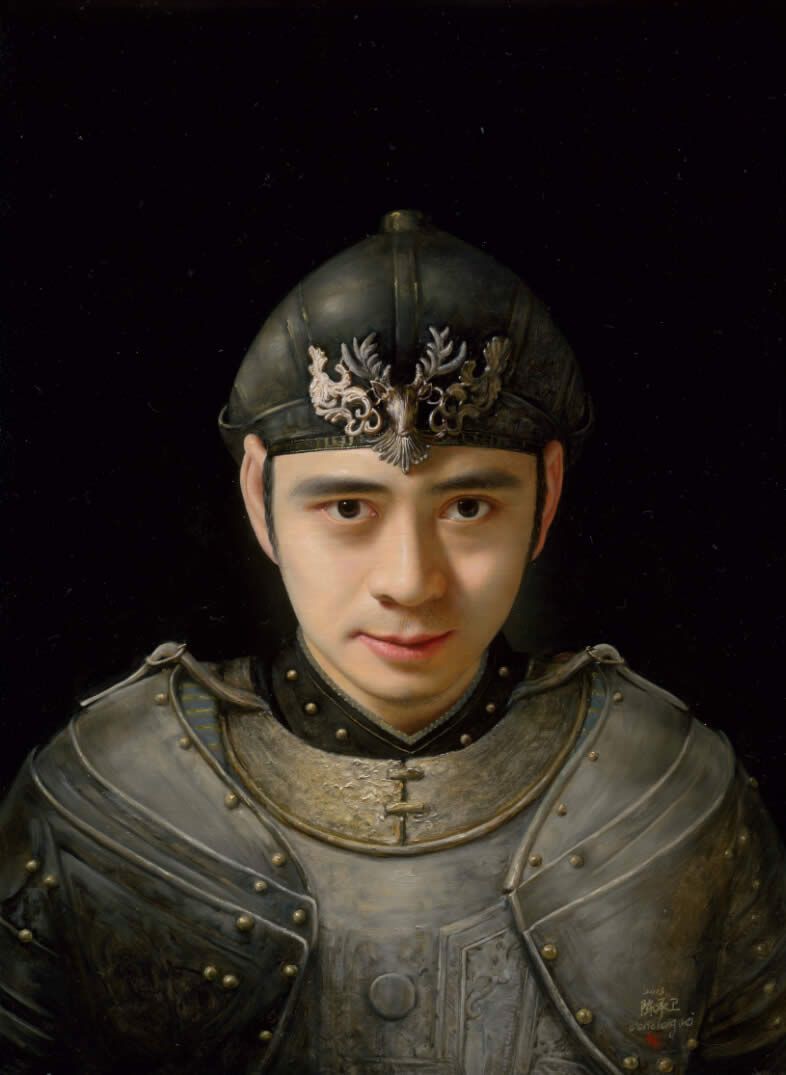
This tendency had been shown in the early autobiographical series of the artist. He dressed himself as a warrior, a western noble, a bearded man, a youth with long hair, a playboy in the republic period, an affectionate gentleman, and so on, in the self-portraitures. He even applied the original scenes in the self-portraitures of Rembrandt directly into his own self-portraitures. This is more of a parody than a self-portraiture. However, he was so earnest and pious in the parody that it seems that he was wholeheartedly immersed in the dreamland and transformed into the spiritual documentary of the artistic creation. In the painting Childhood Dream, the artist is dressed up in armor, ready to fight, with his eyes blazing, which truly restores the image of a valiant soldier. It used to be the innocent fantasy of his childhood. When he grew up, he continued the fantasy with art and solemnly captured it on canvas. In another picture, he appeared in the scene of Rembrandt's self-portraiture in 1660. Rembrandt was at the peak of his life when he completed the self-portraiture. He was in high spirits and showed an arrogant manner, which was vividly imitated by Chen. Chen hoped to pay his tribute to the great master in this way. Meanwhile, he tried to challenge the master to a certain extent with arrogance and pride. The ambitious young man in the picture is just so frank and fearless. However, who could have guessed how diligent and arduous he has been behind the picture to prepare for the commanding burst into bloom. Besides, the artist intended to inspire us to review the classic works in this way. Today, when we regard the oil painting masterpieces during the Renaissance and Baroque period as classics, the subtext is that they are out of date. The separation of time and space would often turn the classical taste into awkward imitation. However, the Autobiography series of the artist have broken through such isolation by absorbing the essence from the works of old masters directly and reconstructing the meaning space of the classics within contemporary context in a new form of self-portraiture.
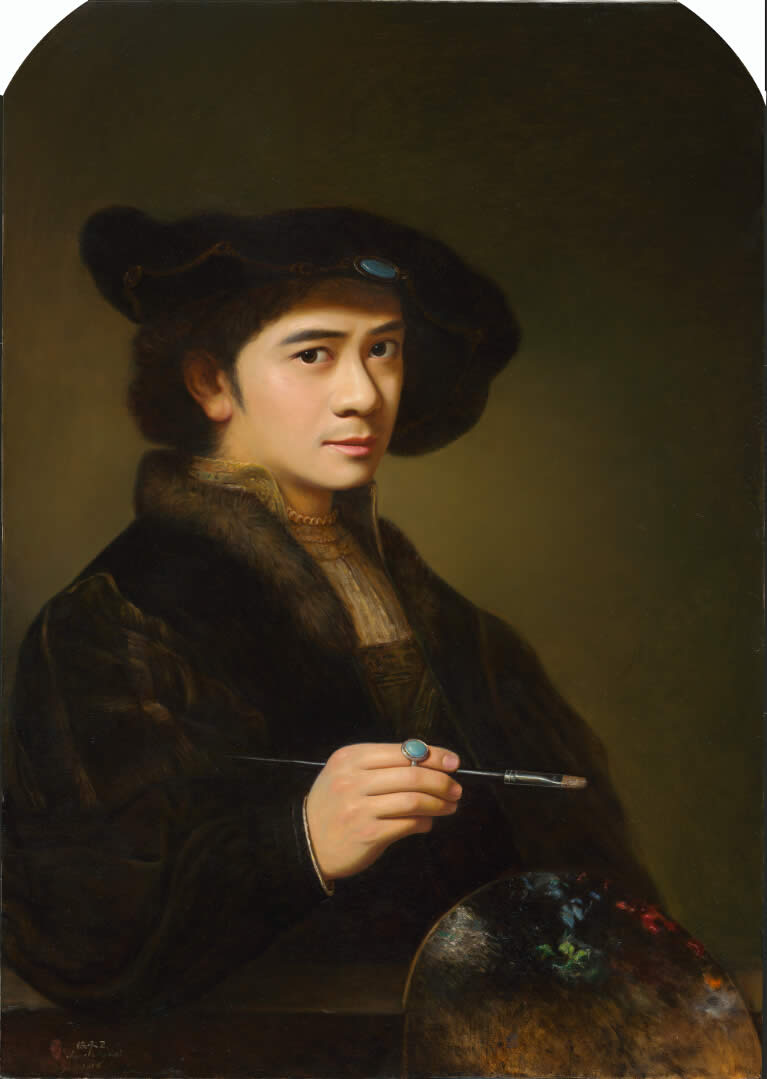
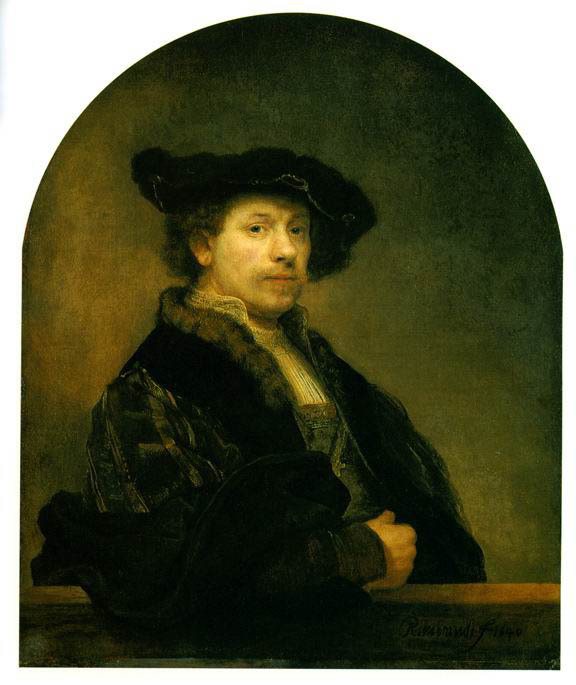
画家曾坦言,他要穷其一生将这种自画像持续下去。如此记录自己的生命轨迹,如同撰写一部浪漫的脚本,背后蕴含的是画家优雅多姿的情态与对自我内心莫大的忠诚。如梦如戏的人生用陈承卫的《自传体》来诠释,初看荒谬,细想却最适合不过:人来到世间走一遭,虽“趣舍万殊,静躁不同”,各自演绎各自的人生,却都逃不脱生老病死,殊途同归,真不如大梦一场!
The artist frankly indicated that he would devote his whole life to this kind of self-portraiture. Recording his life track in this way is just like writing a romantic film script which embodies the artist’s elegant spirit and great loyalty to his inner self. It seems ridiculous to illustrate the dramatic life with the Autobiography of Chen Chengwei at first thought, yet we will find that there couldn’t be any better choice if we ponder over this. Though people with diversified interests and characteristics have different life experience, none of them can be immortal. Different paths lead to the same destination, which is just like a dream.
如果说《自传体》系列虚构得恰到好处,那么《大民国》系列,则脱离了自画像模式,景幕分明,情境交融,彰显出画家日臻成熟视觉语言。作为《自传体》系列的延伸,《大民国》系列除了当代感十足的观念写实手法之外,或许还有两点难能可贵之处:
While the Autobiography series are of the right level of fiction, the Republic of China series, however, demonstrate the increasingly mature visual language of the artist with the feeling and setting naturally blended under the background of distinctive features, which is completely different from the mode of self-portraiture. As the extension of the Autobiography series, there are two valuable points in addition to the modern realistic conceptual method in the Republic of China series.
其一,“民国”作为一种文化记忆,在商品经济驱使下的当代社会已经被广泛地消费:从充斥银屏的民国年代戏到低级廉价的时尚Cosplay,布衣、旗袍、长衫、马褂、毡帽都变成了供现代人狂欢的历史符号。然而,在《大民国》系列中,却极少出现以上提及的消费痕迹,而更多地体现出画家的个人情结与历史梦境,是一种自省式的情感世界的自我构建。正如陈承卫自己所谈到的那样:“大民国系列并非再现历史,仔细观察细节会发现这是一种属于这个时代才会有的一种解读,画面有某种岁月感和未来感,它甚至是一种历史的镜像,某些细节还有暗示语指向性,如人物的人状投影,如伸入画面的某带有力量的双手,再如手电筒映射出的党徽等等,作品整体都微微散着一丝独特的绘画情愫,这种情愫其实也就是我所要带进画面的观念。”
Firstly, as a kind of cultural memory, the “Republic of China” has been widely illustrated in the modern society driven by commodity economy. From the TV series flooding the screen to the cheap fashion cosplay, cotton clothes, cheongsam, long gown, Chinese jacket and felt hat are all turned into historical symbols for the carnival of modern people. However, the previously mentioned signs of consumption could hardly be found in the Republic of China series which reflect mostly the personal feelings and historical perceptions of the artist. It constructs the emotional world in an introspective manner. According to Chen Chengwei himself, “the Republic of China series is not a representation of the history. After careful observation of the details, you can find that it is an interpretation exclusive to the current times. The pictures show a certain sense of both the history and the future, which can even be considered as mirror images of the history. They also suggest that something are hidden behind certain details such as the human shaped shadow of the character, the powerful hands stretching into the picture, the Party emblem reflected in the beam of the flashlight. The whole series reveal a trace of unique sentiment of painting which is actually the concept I want to bring in the pictures”.
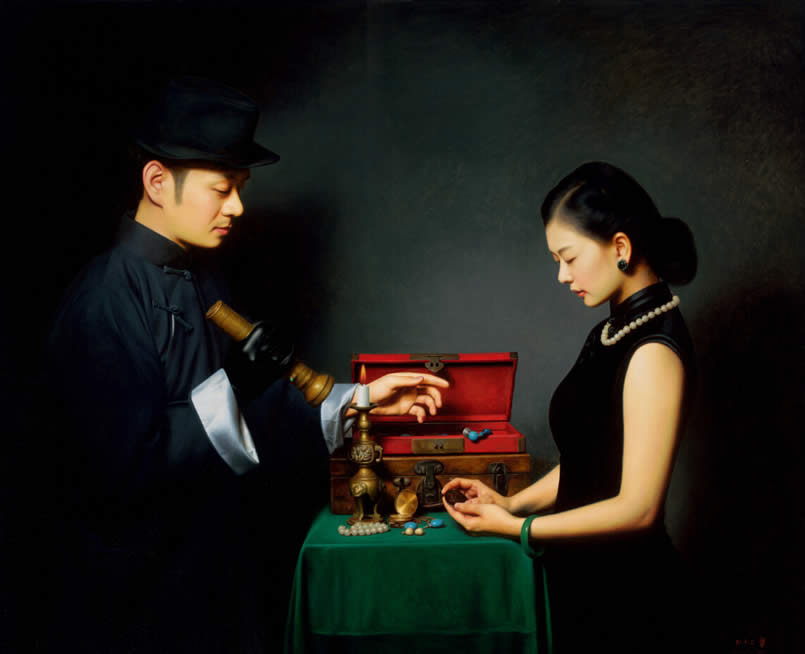
在《月下影》中,才子美人相对而立,案前的烛台首饰散发出微光,似乎暗示着离别的悲戚;《红玫瑰》与《白玫瑰》两幅作品,借女作家张爱玲的小说名称,讲述了两个爱情的寓言;《迷雾》中警察逮捕女学生的戏剧时刻,画家却处理得异常冷静,仿佛那曾经的压迫与反抗、柔弱与强势、文雅与鲁莽,都在岁月的烟云中褪了色,只留下淡淡的印记;《暗夜箴言》中,光线照亮女学生举起的纤纤玉手,顿时强化了事件的紧张感,从手法上鲜明地致敬古典大师伦勃朗……在这些作品中,情绪与事件、手法与观念融为一体,它们并不遵循时代的逻辑,而反过来投射当下的心理状态,写照自我的同时,也在写照每个观者。
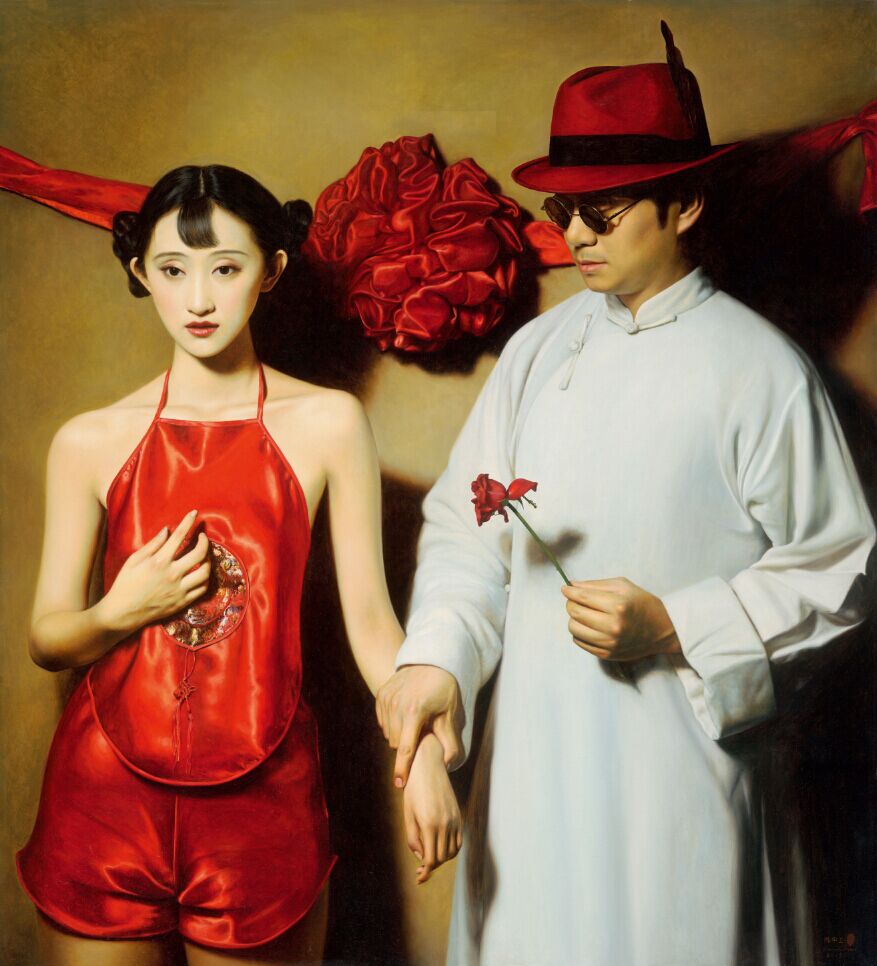
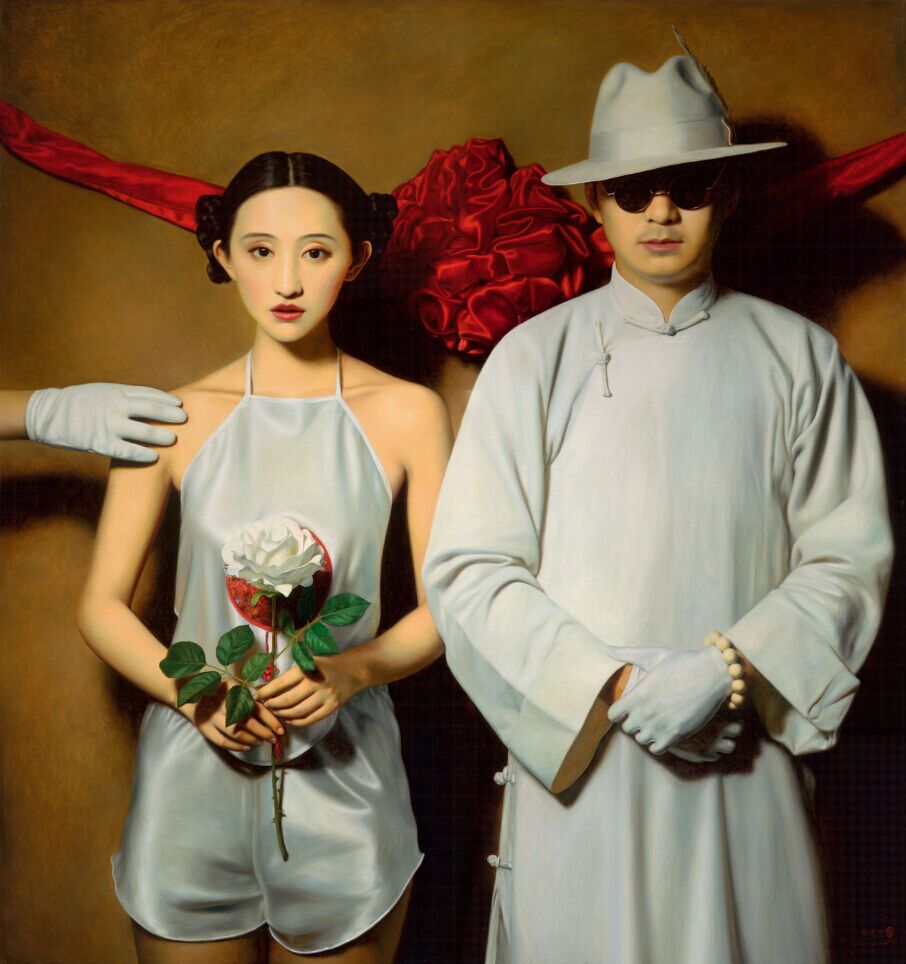
In 《Moonlight Shadow》, a talented scholar and a lovely lady are standing face to face in the faint gleam of the candlestick and jewelry on the table, which seems indicate the grief of departure. In the two works of Red Rose and White Rose, the artist tells two fables of love with the titles of the novels written by female writer Zhang Ailing. As for Mysterious Fog, the female student is extremely calm under the brush of the artist at the dramatic moment of her being captured by the policeman. It seems that the conflict of rudeness and elegant, as well as oppression and resistance have already faded away with the passing of time, leaving only a faint imprint. As is expressed in Maxim of Darkness, the slender hands of the girl raising up high is highlighted by the ray of light which immediately enhances the tension of the incident. The method clearly shows the artist’s respect for the old master Rembrandt...All these works show the combination of emotion and event, with the integration of method and concept. The artist didn’t follow the logic of that time. On the contrary, he projected the current psychological state into his works. It is the portrayal of not only himself but also every viewer.
其二,他的作品始终坚持美,没有因为刻意追求当代感而背离美的原则。自1917年杜尚将签了名的小便器放入美术馆开始,当代艺术反美学的浪潮从未平息,似乎艺术作品越是丑陋得离经叛道,就越能体现出当代属性。然而,随着当代身体美学、显现美学、气氛美学等的兴起,当代艺术也开始呈现出回归在场经验的趋势,作为视觉愉悦的审美经验被重新纳入到创作当中。《大民国》系列通过艺术家的扮演来强化在场的观念,又通过古典写实的手法保留了艺术作品的审美特质。正如画家自己所认同的那样:“我希望作品无论是古典的还是前卫的终究应该带给人以美的享受,而非丑陋空洞的形式主义和令人作呕的荒唐之举。”在探索的道路上,陈承卫没有盲目迎合,而始终保持对美的一颗敬畏之心,他的艺术品质也随之得到升华。
Secondly, the artist never gives up the pursuit of beauty. He hasn’t sacrificed the principle of beauty for the deliberate emphasis on modernity. Since Duchamp put a urinal with his signature into an art gallery in 1917, the anti-aesthetics tide of modern art has never subsided. It seems as if the uglier an art work is, the stronger sense of modernity it reflects. However, with the rising of somaesthetics, appearance aesthetics, and atmosphere aesthetics, modern art is beginning to show the tendency of returning to the real-time experience, and the aesthetic experience which pleases the eyes is included into the artistic creation again. In the Republic of China series, the participation of the artist in the scene has strengthened the concept of real-time presence. Meanwhile, the aesthetic quality of the art work has been maintained due to the classical realistic method. In the words of the artist, “I hope that artistic work should bring viewers the enjoyment of beauty rather than ugly and empty formalism and disgusting absurdism no matter it is a classical piece or an avant-garde creation”. On the path of exploration, Chen Chengwei hasn’t drifted with the tide blindly. With a persistent reverence for the aesthetic value, the artistic quality of his work has been greatly promoted.
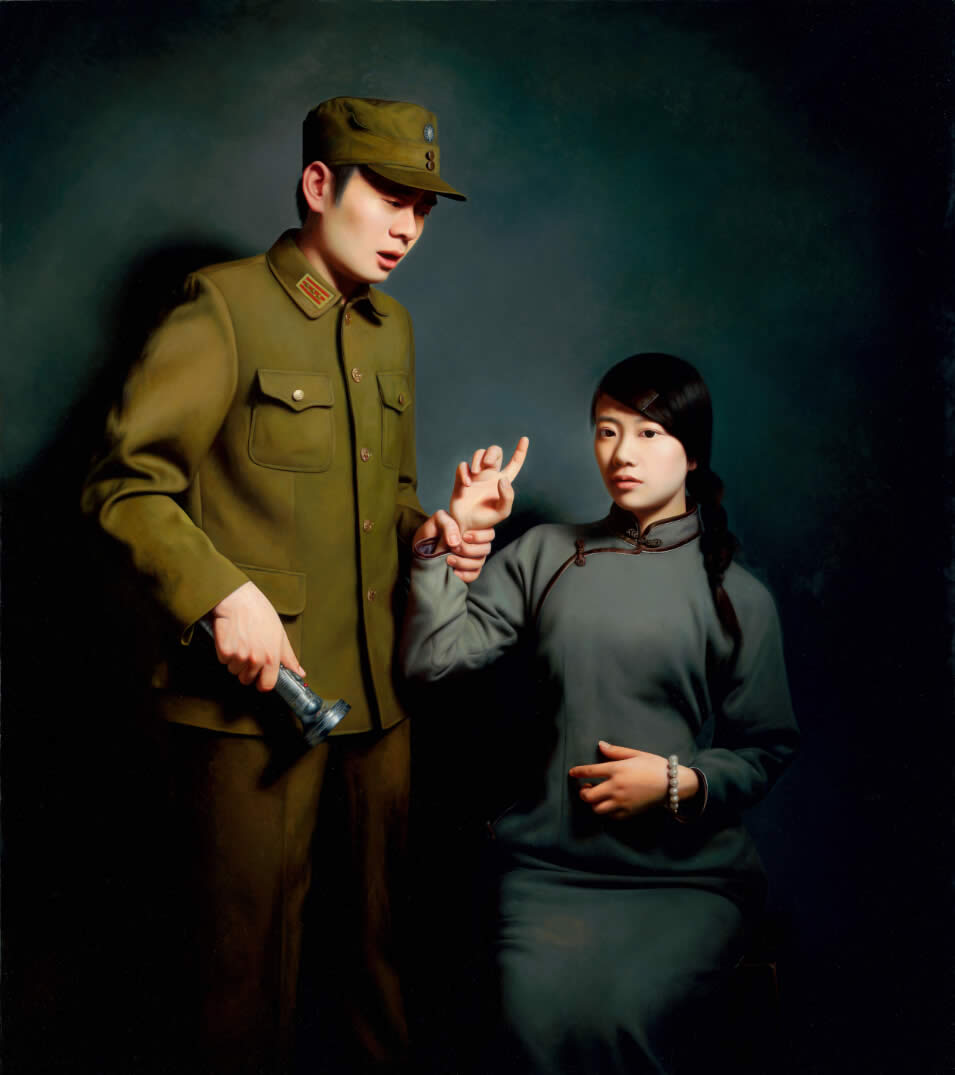
陈承卫的自我写照,既包含了《雍正行乐图》式的自传式表达,又融汇了辛迪·舍曼式的当代艺术观念。他将洞见隐藏在唯美而怪诞的虚构画面中,一本正经地再现幻觉。他笔下的人物定格在莫可名状的戏剧瞬间,制造出了某种直抵人心的纪念碑性。画家本人既是创作的主体,又是画中的形象,隐喻的手法唤起观众的无限遐想。自我的形象无处不在,又寻之不得——或许每一个形象都是他本人的写照,又或许他谁都不是,而仅仅是诡谲地藏匿于作品的背后,成为那个最超脱的旁观者。《大民国》系列犹如一出宏大的实验戏剧,画家同时充当了导演、演员、道具师、灯光师、布景师等各个舞台行当。在其中,历史充当了想象的标本,一幕幕铺陈开来,唯美、直观、强烈,让人过目难忘。或许也正因为这样,我们面对着陈承卫的油画,即便明知是梦呓,也同样会为之着迷。
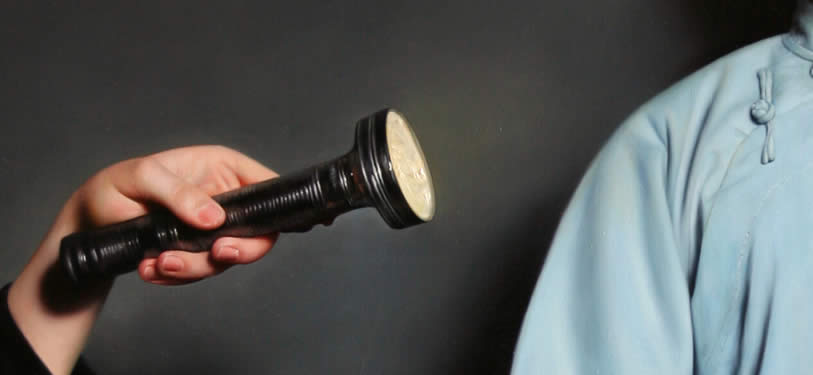
The self-portraiture of Chen Chengwei not only covers the autobiographical expression in Amusement of Emperor Yongzheng, but also integrates the concept of Cindy Sherman-esque modernity. He hides the insight behind the beautiful and grotesque picture of imagination and reproduces the illusion in a solemn manner. The characters are frozen at a subtle but dramatic moment, creating a monumentality which touches the soul of the viewers. The artist is the subject and the character of the creation at the same time. The technique of metaphor provides the viewers an extensive space for imagination. His image could be found everywhere yet his true self could hardly be reached. Perhaps every image of him is the real portrayal or maybe has no connection to him, while he is just the mysterious detached observer hiding behind the works. The Republic of China series seems like a grand experimental drama with the artist serving as the director, actor, prop master, lighting technician, set designer, and all other roles related to the stage. In the series, imagination is set off from history to be portrayed in different scenes. The beautiful and intuitive pictures of strong contrast are really impressive. Perhaps it is the reason why people are still fascinated by the oil paintings of Chen Chengwei knowing clearly that they are pure fantasy. 2015年4月9日






